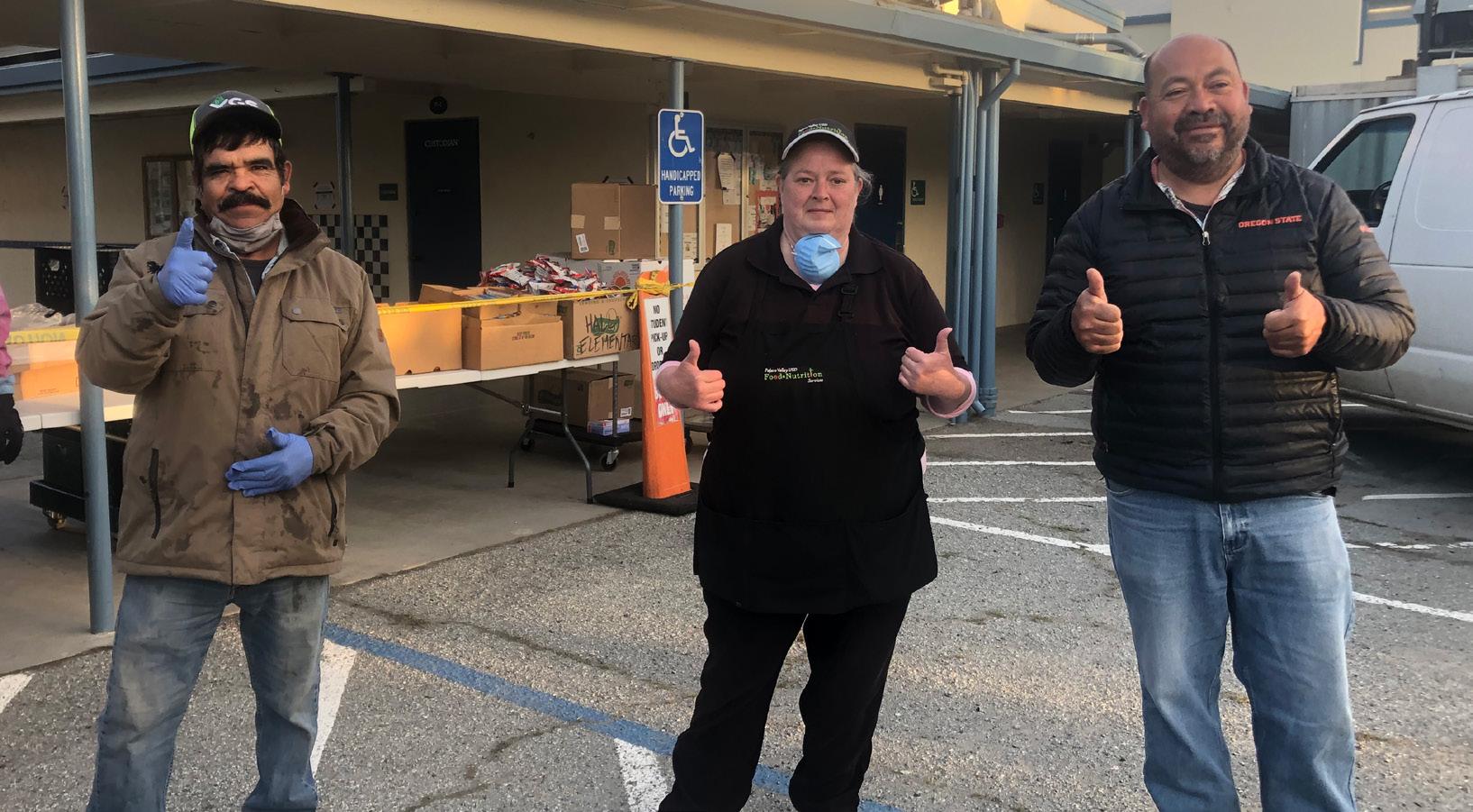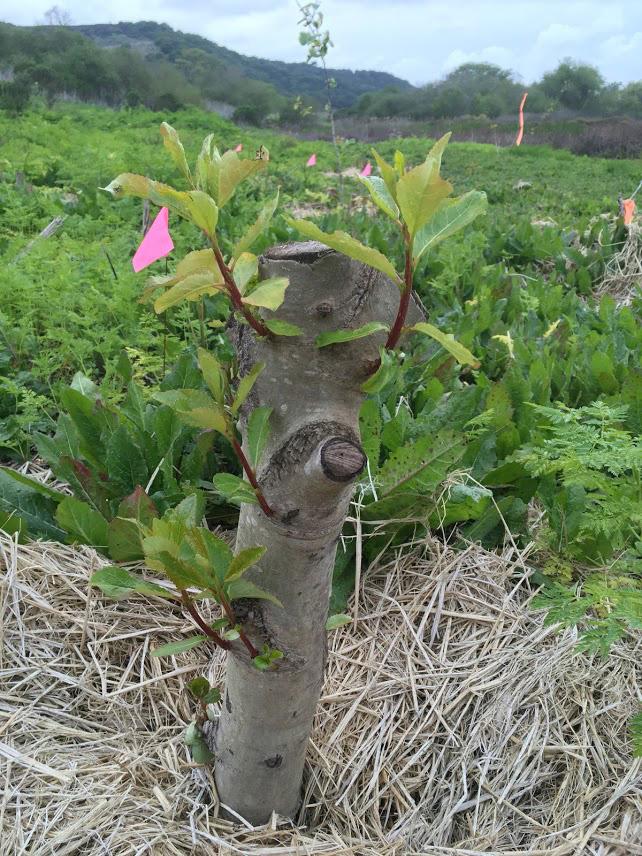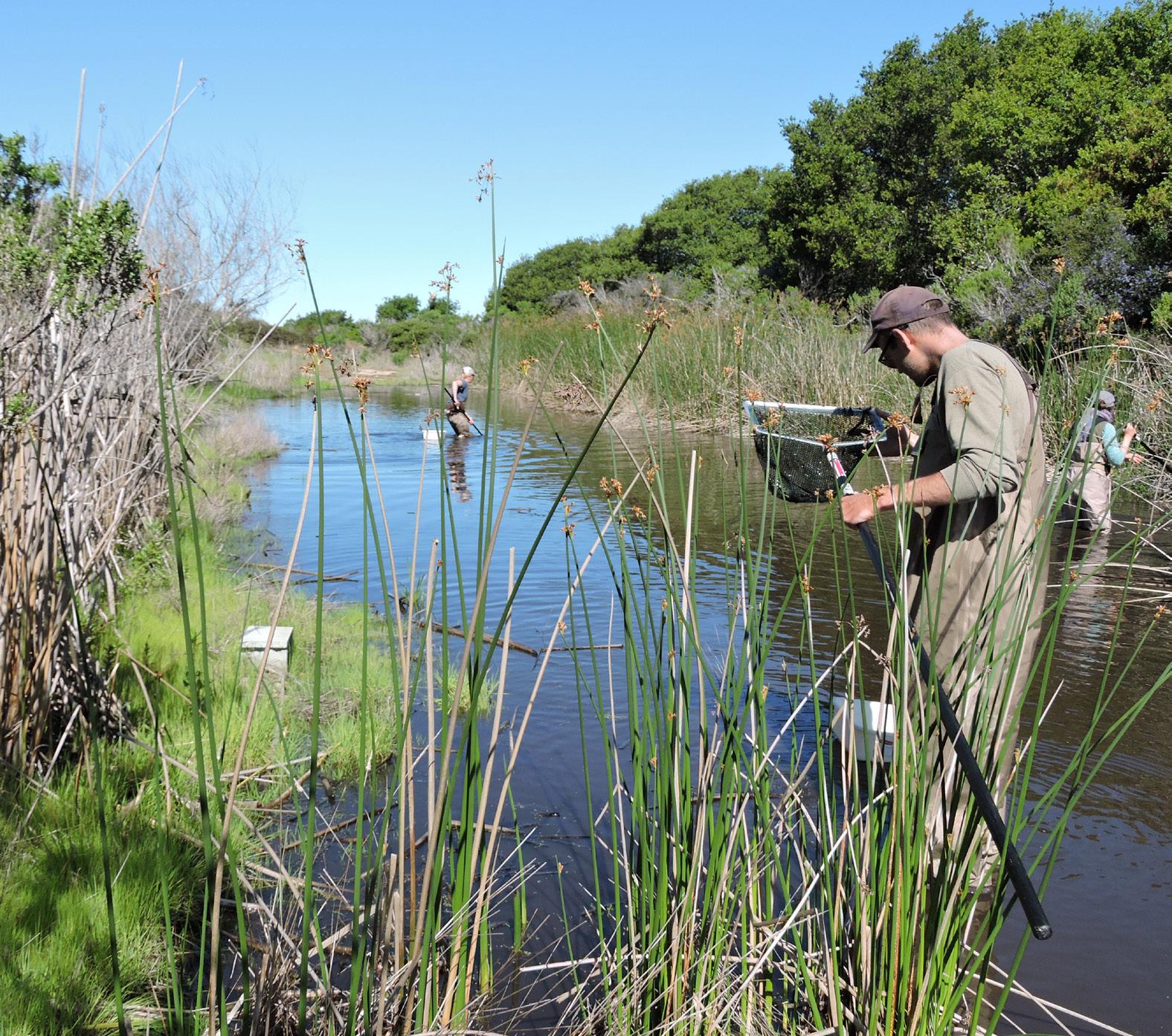1,000 TREES ESF Land Steward Ken Collins (also fondly known as ESF’s “Land Dude”) has a vision. By the end of winter, he plans to plant 1,000 native trees on our protected lands in the Elkhorn Slough watershed — an ambitious goal that supports ESF’s work to restore habitat around Carneros Creek. “Most people understand that trees absorb carbon from our atmosphere and reduce the greenhouse effect,” says Ken. “Yet trees do so much more. Their leaves filter pollution from the air and their roots clean the water. They provide shade and host a range of birds, insects, and amphibians that use trees at various stages in their life cycles.”
MEMBER PROFILE
Rick Fournier
Rick leads an ESF birding walk (2015), photo by Kiliii Yuyan
(above) A cottonwood stake sprouting new growth takes root in its new home on the upper flood banks of Carneros Creek.
In 1991, Rick Fournier participated in a docent training led by Mark Silberstein. He recalls dropping in for visits at the Elkhorn Slough Foundation trailer in those early days, when ESF comprised two staff members and a desk piled high with papers. “The Foundation has always felt like family,” says Rick, remembering the warmth of his reception each time. Rick served a stint as a Board Member of the Foundation and led successful efforts to engage business and corporate support. Rick started and coordinated the original Montery Bay Birding Festival, which then received its funding and administrative support from the Elkhorn Slough Foundation. Initially, he had mixed feelings when the Foundation turned over the reins of the annual birding celebration to run as its own independent nonprofit. 6
n
tidal exchange
Planting 1,000 trees is no small feat. Yet already this year, Ken and a crew of dedicated volunteers planted more than 700 trees as part of restoring the Carneros Creek floodplain. Large scale restoration projects require a lot of planting material — more than the Reserve greenhouse or ESF’s Iniguez native plant nursery could grow from seed or cuttings. “Our solution was to produce live stakes from willow and black cottonwood trees,” says Ken. “Most of these source trees were under power lines and already being suppressed by PG&E. From each tree, we harvested 3–5 stakes that we could plant, allowing the parent tree to re-sprout from its base.” For now, we are unable to hold events like the birding walk pictured at left. Yet thanks to Rick, we have a few tips for birding in a time of social distance.
Exercise regularly Use your daily
walk or other outdoor time as an opportunity to get in a little birding.
Study bird structure
Even when a bird is distant or poorly lit, you can often observe the form and structure of its beak, body, and movement.
“That was around the time ESF became a land trust and shifted its focus to conserving land,” Rick recalls. “I remember feeling disappointed at the time, but it was the best decision the Elkhorn Slough Foundation has ever made. Thanks to that, we now have more than 4,000 acres of habitat protected for birds and wildlife.” While many regular visitors to the slough recognize Rick as the expert birder leading Reserve “Early Bird” tours and ESF birding walks, Rick has also supported the Foundation’s work by surveying several ESF properties — including Seamist, Catellus, and Elkhorn Highlands Reserve — to document their birds and wildlife. This year, after 25 years of dedicated volunteer service, Rick has stepped back from leading monthly






